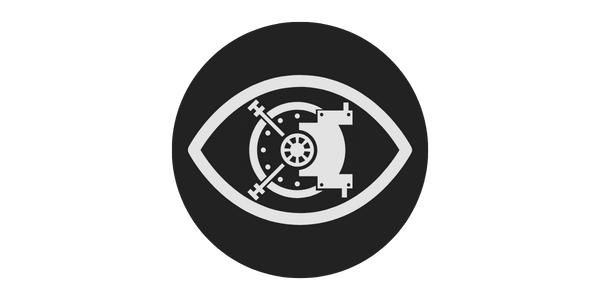The Power of Mindfulness: How Meditation Can Improve Focus and Well-being
Russel SmithShare
Short on time? We get it—check the TL;DR at the bottom!
Mindfulness and meditation can be transformative tools for improving focus, especially for ADHD minds. Research and real-life experiences alike reveal how these practices can enhance concentration, emotional regulation, and self-awareness—all areas where ADHD brains often struggle. Below, we’ll explore how mindfulness and meditation can help you thrive and share actionable tips to get you started.
Benefits of Mindfulness and Meditation for ADHD
Mindfulness and meditation can bring measurable improvements to ADHD symptoms. Some of the key benefits include:
-
Improved Focus 🧠
Regular practice helps strengthen your ability to stay on task and filter out distractions. -
Reduced Stress 🌿
Mindfulness lowers stress hormones, helping you feel calmer and more centered. -
Better Emotional Regulation 💡
Meditation builds awareness of emotional triggers, making it easier to pause before reacting impulsively. -
Enhanced Self-Awareness 🪞
These practices foster a deeper understanding of your thoughts and behaviors, empowering better decision-making.
Simple Meditation Techniques to Start With
Starting a meditation practice can feel overwhelming, but simplicity is key. Here are four beginner-friendly techniques to try:
- Breath Awareness
- Sit comfortably and focus on your breathing.
- Inhale deeply through your nose, hold for 3-4 seconds, and exhale slowly through your mouth.
- Notice the rise and fall of your chest, and gently redirect your focus if your mind wanders.
- Body Scan
- Lie down or sit comfortably.
- Starting from your toes, bring your attention to each body part, noticing any sensations.
- Move slowly upwards to your head, releasing tension as you go.
- Guided Meditation
- Use apps like Headspace, Calm, or Insight Timer to follow pre-recorded sessions.
- Start with 5–10 minutes tailored to relaxation, focus, or ADHD-specific goals.
- Mindful Walking
- Walk at a slow pace, noticing the movement of your legs and the feel of the ground beneath your feet.
- Pay attention to your surroundings—sounds, sights, and smells.
Integrating Mindfulness into Daily Activities
You don’t need to set aside extra time for mindfulness—it can easily fit into your everyday routine:
- Mindful Eating 🍴
- Savor each bite by noticing the flavors, textures, and aromas of your food.
- Mindful Listening 👂
- Focus entirely on the words and emotions of the person speaking, without planning your response.
- Mindful Chores 🧽
- Engage fully in tasks like washing dishes or sweeping, paying attention to the sensations involved.
Setting Up a Mindfulness Routine
Creating a mindfulness habit doesn’t have to be daunting:
- Choose a Regular Time
- Morning, evening, or even during a lunch break—pick a time that works best for you.
- Create a Dedicated Space
- Set up a quiet, comfortable area where you can meditate without interruptions.
- Start Small
- Begin with just 2–5 minutes a day, gradually increasing as you feel more comfortable.
- Be Consistent
- Regularity is more important than duration. Even a few minutes daily can make a big difference.
Overcoming Common Challenges
It’s normal to face obstacles when starting mindfulness or meditation. Here’s how to tackle them:
- Distractions
- Expect your mind to wander. Simply notice it and gently bring your focus back to the present.
- Unrealistic Expectations
- Meditation isn’t about instant results. The benefits build over time with consistency.
- Finding Time
- Incorporate mindfulness into existing activities, like commuting or waiting in line.
- Staying Motivated
- Join a mindfulness group or partner with a buddy for accountability.
Additional Resources
If you’re eager to dive deeper into mindfulness and meditation, check out these helpful tools:
- Books
- The Miracle of Mindfulness by Thich Nhat Hanh
- Wherever You Go, There You Are by Jon Kabat-Zinn
- Apps
- Headspace, Calm, Insight Timer, MyLife Meditation
- Courses
- Mindfulness-Based Stress Reduction (MBSR) programs, many available online.
TL;DR:
- Benefits: Mindfulness improves focus, emotional regulation, and self-awareness while reducing stress.
- Techniques to Start: Try breath awareness, body scans, guided meditation, or mindful walking.
- Everyday Mindfulness: Incorporate mindfulness into activities like eating, listening, and chores.
- Tips for Success: Start small, stay consistent, and embrace the journey—even with distractions.
- Resources: Explore books, apps, and courses to deepen your practice.
Meditation doesn’t require perfection—just persistence. Start small, stay curious, and watch your focus flourish! 🌟
Why PeakFlowSpace Works for This
At PeakFlowSpace, we understand the ADHD struggle with mindfulness—it’s easy to want to meditate but hard to stay consistent. That’s why we created tools to simplify the process:
- Meditation timer, logs and reflections: A central place to log and reflect on your mindfulness journey.
- Visual Routines: Build meditation or mindfulness into your daily schedule seamlessly.
Our system provides everything you need to integrate mindfulness into your life without the overwhelm.

